| Abstract | We use a simple SEIR model for malaria transmission dynamics, based on a system of ordinary differential equations, as our baseline model. We derive a formula for the reproductive number and investigate the existence of endemic equilibria. We then introduce a simple two-stage-structured mosquito population model where the mosquito population is divided into two classes. After a brief investigation on this simple stage-structured mosquito model, we incorporate it into the simple SEIR malaria model. We present basic analysis for the combined model and discuss how this combined model can help us study the impact of climate change on the transmission of malaria and other mosquito-borne diseases. We show that, using the reproductive number as a bifurcation parameter, the simple malaria model and the mosquito-stage-structured model can have a backward bifurcation. We also talk about the interaction between wild and transgenic mosquitoes and its impact on the malaria transmission. |
|---|

